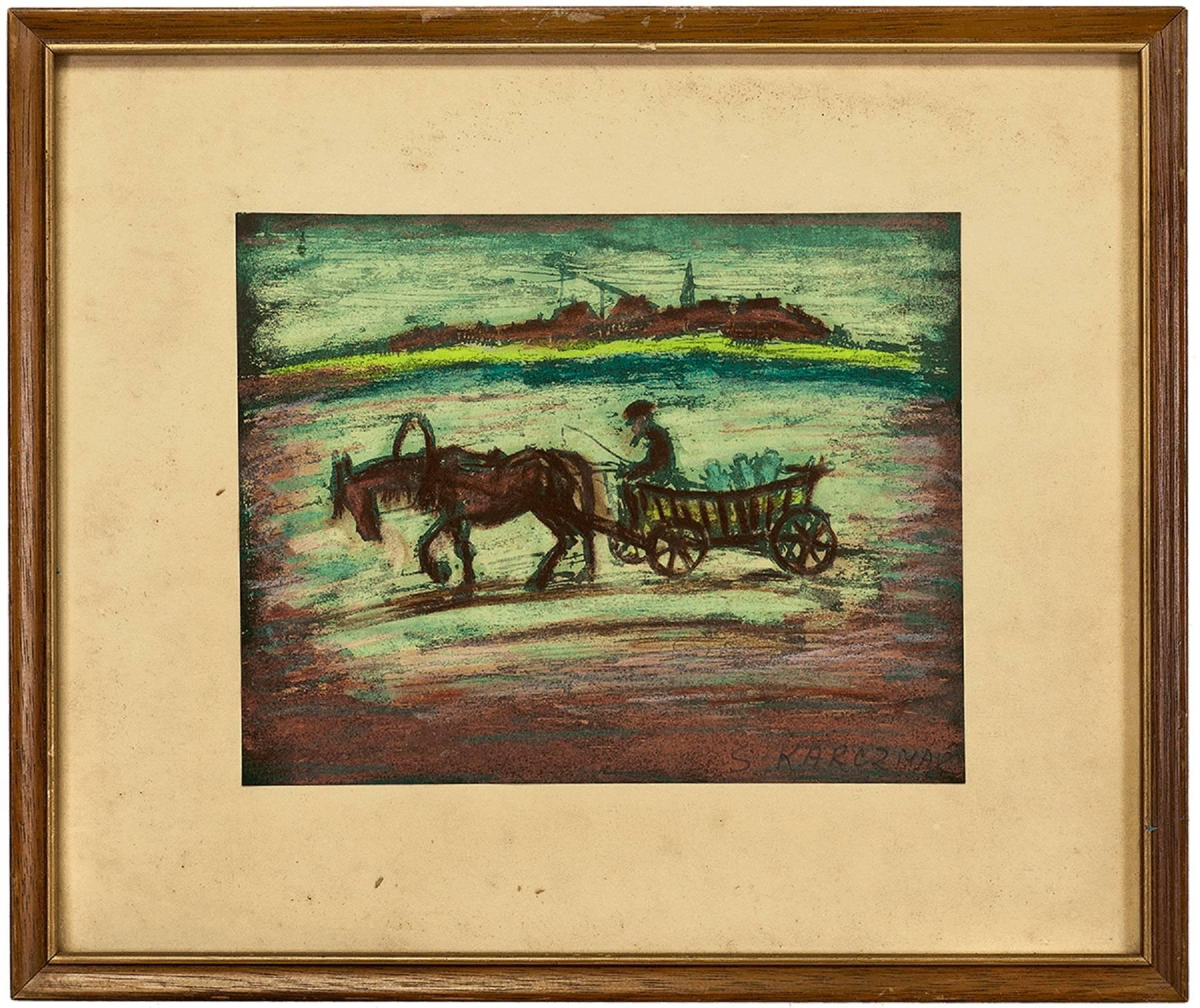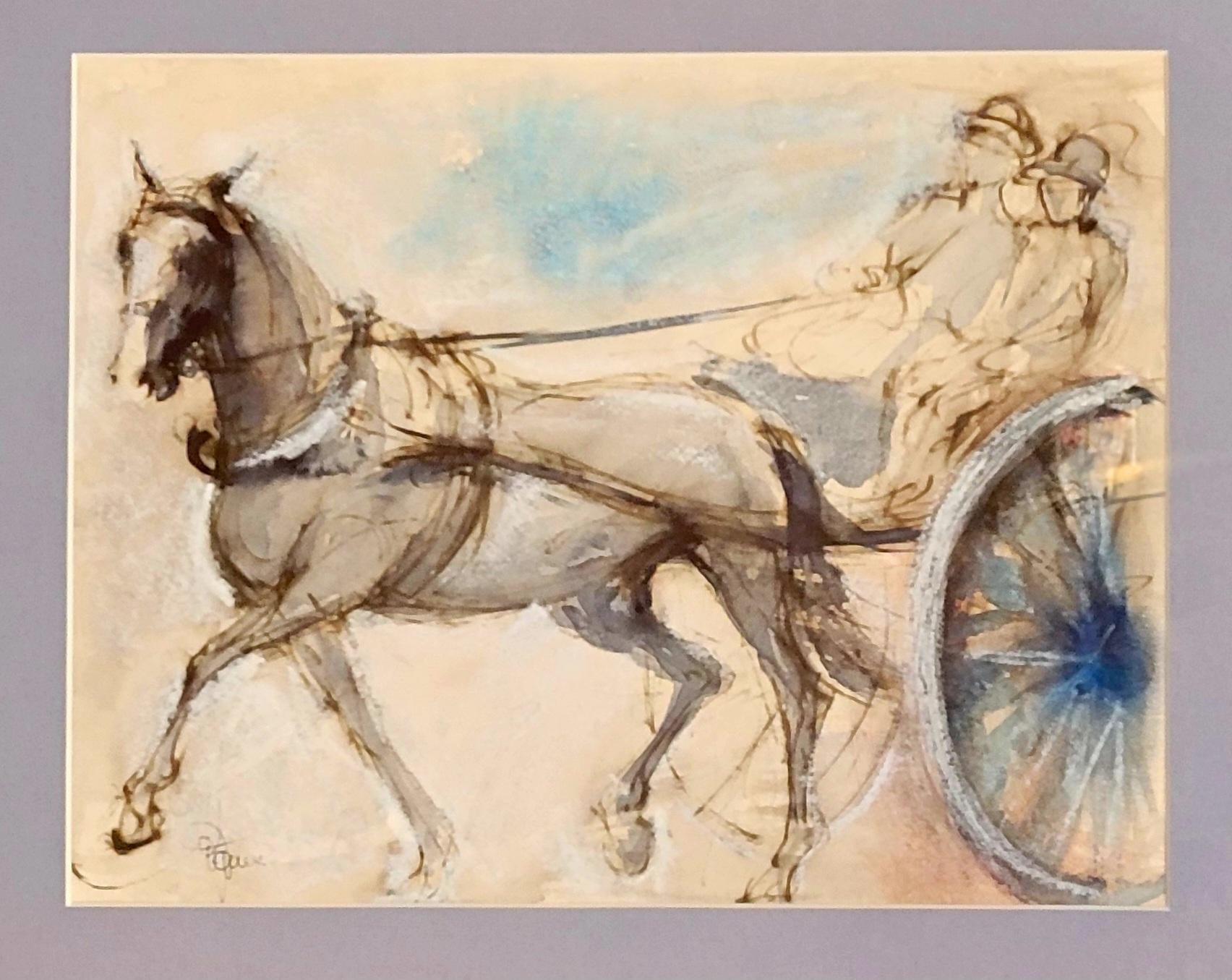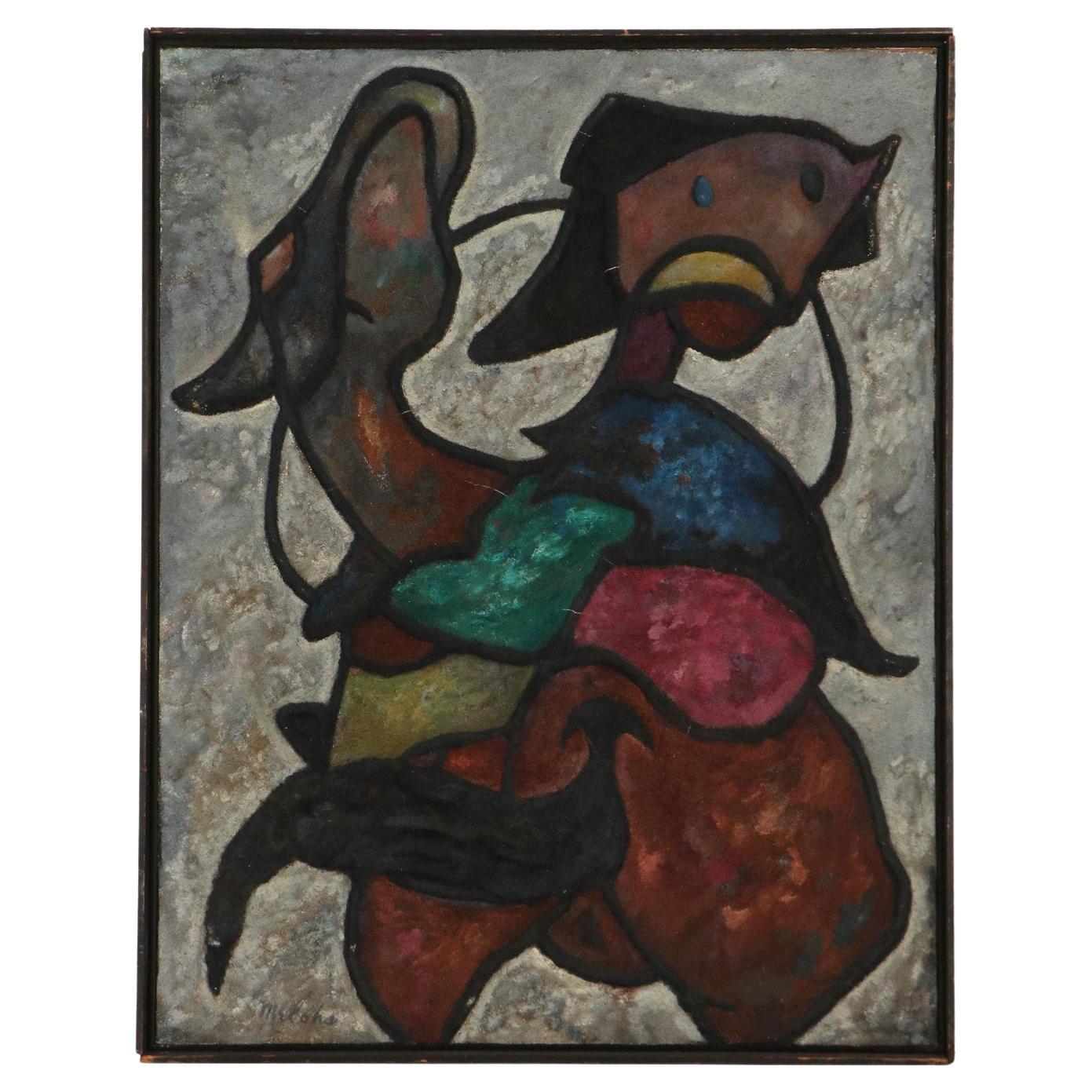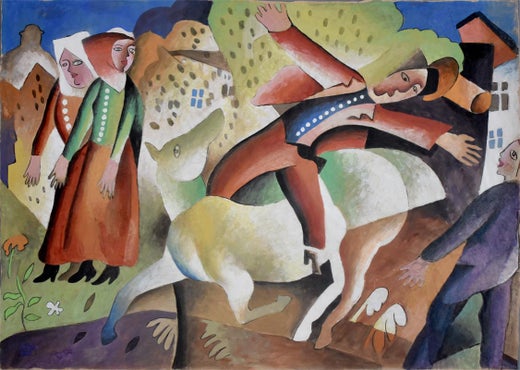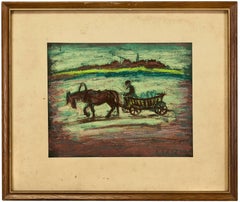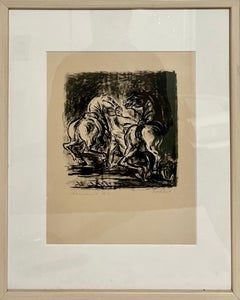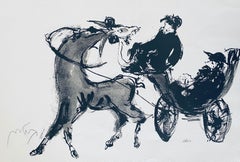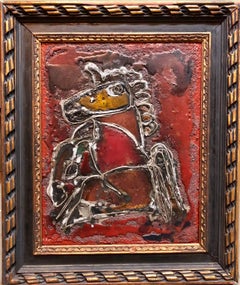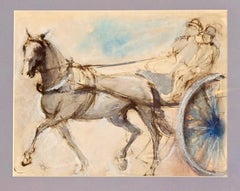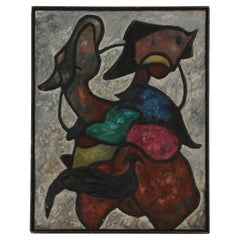Bela KadarHungarian Artist Modern Mixed Media Horse and Buggy Bela Kadar
About the Item
- Creator:Bela Kadar (1877 - 1955, Hungarian)
- Dimensions:Height: 9.5 in (24.13 cm)Width: 12 in (30.48 cm)
- Medium:
- Movement & Style:
- Period:
- Condition:Please see Photos.
- Gallery Location:Surfside, FL
- Reference Number:1stDibs: LU38215213442
Bela Kadar
Béla Kádár was a Hungarian painter influenced by Der Blaue Reiter, Cubism, Futurism, Neo-Primitivism, Constructivism and Metaphysical painting. Born in Budapest on June 14, 1877, Kádár became a distinctive modernist painter whose career spanned several decades. Kádár began his studies in 1896 and for this, he traveled to Paris and Munich. He attended the Academy of Fine Arts in Budapest and won the Kohner prize in 1910. Kádár's early works, which he began exhibiting in 1918, showed the influence of the Secessionists and Post-impressionists. In 1923, he exhibited with his friend Hugó Scheiber in Berlin at Walden’s Sturm Gallery and 57 of his works were shown. Der Sturm was one of the most important avant-garde galleries in Europe and Kádár continued to exhibit there for several years. Kádár traveled to the United States and stayed for a year. He exhibited with the Société Anonyme at the Brooklyn Museum. In 1929, he returned to Budapest to exhibit his works in his home country. Kádár was personal friends with Chagall, Picasso, Kandinsky and Kokoschka. Like his contemporaries, his style evolved through the decades of the 20th century. His subjects range from Hungarian legends, metaphysical, portraits and fanciful decorative themes. Kádár's place in the history of Modern Art has been assured by the publication of two books on his life and works. Kádár died on January 22, 1956, in Budapest.
- ShippingRetrieving quote...Shipping from: Surfside, FL
- Return Policy
More From This Seller
View AllLate 20th Century Modern Figurative Drawings and Watercolors
Oil Pastel, Mixed Media
1910s Abstract Figurative Prints
Lithograph
Mid-20th Century Expressionist Prints and Multiples
Lithograph
Mid-20th Century Modern Mixed Media
Mixed Media
20th Century Modern Mixed Media
Mixed Media
1970s Modern Abstract Paintings
Ink, Watercolor, Gouache
You May Also Like
Late 19th Century Landscape Drawings and Watercolors
Pencil, Etching
Early 20th Century Outsider Art Drawings and Watercolor Paintings
Ink, Watercolor, Gouache, Paper
1940s Landscape Paintings
Oil
Vintage 1950s American Expressionist Paintings
Canvas
Early 20th Century Modern Figurative Prints
Pencil
1960s Contemporary Figurative Paintings
Oil, Tempera, Cardboard
